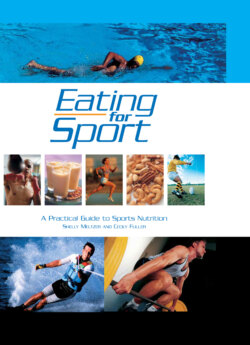Читать книгу Eating for Sport - Shelly Meltzer - Страница 6
Оглавлениеcontents
Nutrition basics and nutritional needs
Contribution of nutrition to performance
Vitamins and minerals and their effect on energy
The conversion of food to fuel
How fuels are used (the four energy systems)
Manipulating the fuel mix: how to become a better fat burner
The importance of fluid to performance
Type of sport and other factors that affect hydration
General fluid guideline and tips
Ergogenic, or performance-enhancing aids
Evaluation of popular supplements
Evaluating products and claims
Additional tips and recommendations
Each section outlines the physical demands and characteristics of a group of sports with common nutritional issues. Case studies highlight common problems and how they can be solved.
Boxing (professional and amateur), Horse Racing, Judo, Karate, Lightweight Rowing, Taekwondo, Weightlifting, Wrestling
Potential harm of rapid weight loss and weight cycling
New rules for safe weight making
Ballet, Figure Skating, Gymnastics, Dressage, Springboard Diving, Surfing, Synchronized Swimming
What is the ideal body fat level?
Core components of effective weight-loss diets
10 Bursts of energy, rapid recovery
Curling, Volleyball, Netball, Basketball, Cricket, Baseball, Hockey, Ice Hockey, Football, Rugby, Badminton, Squash, Racquetball
Low body fat levels and increased muscle mass
Athletics (track and field), Skiing (alpine and downhill), Speed Skating, Sprint Swimming, Track Cycling
Energy systems
12 Skill, concentration and manoeuvres
Archery, Fencing, Golf, Lawn Bowls, Sailing, Waterskiing
Foods that sustain concentration
Adventure Racing, Biathlon, Triathlon, Canoeing, Cycling, Kayaking, Marathon, Open Water Sailing, Long Distance Open Water Swimming
